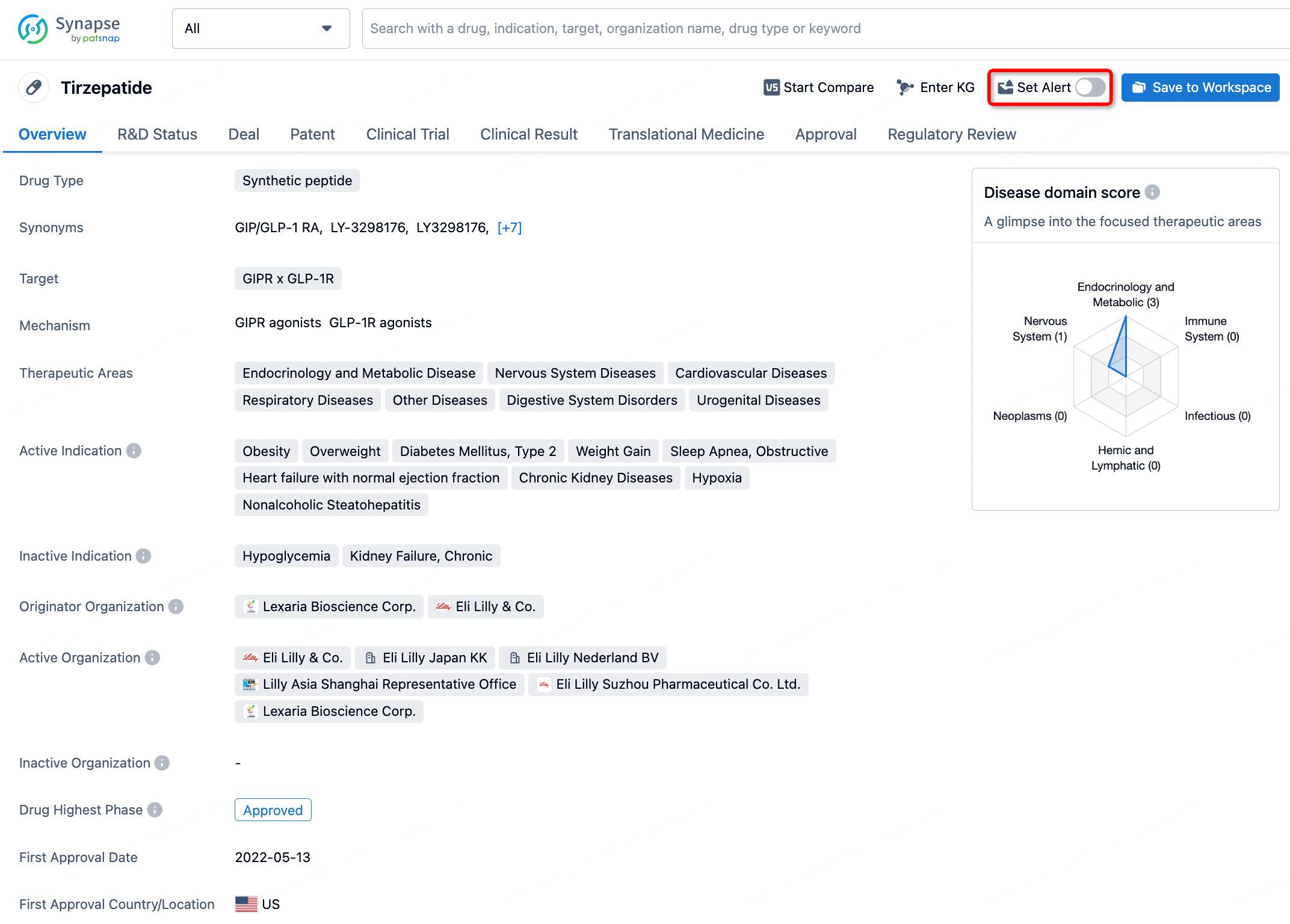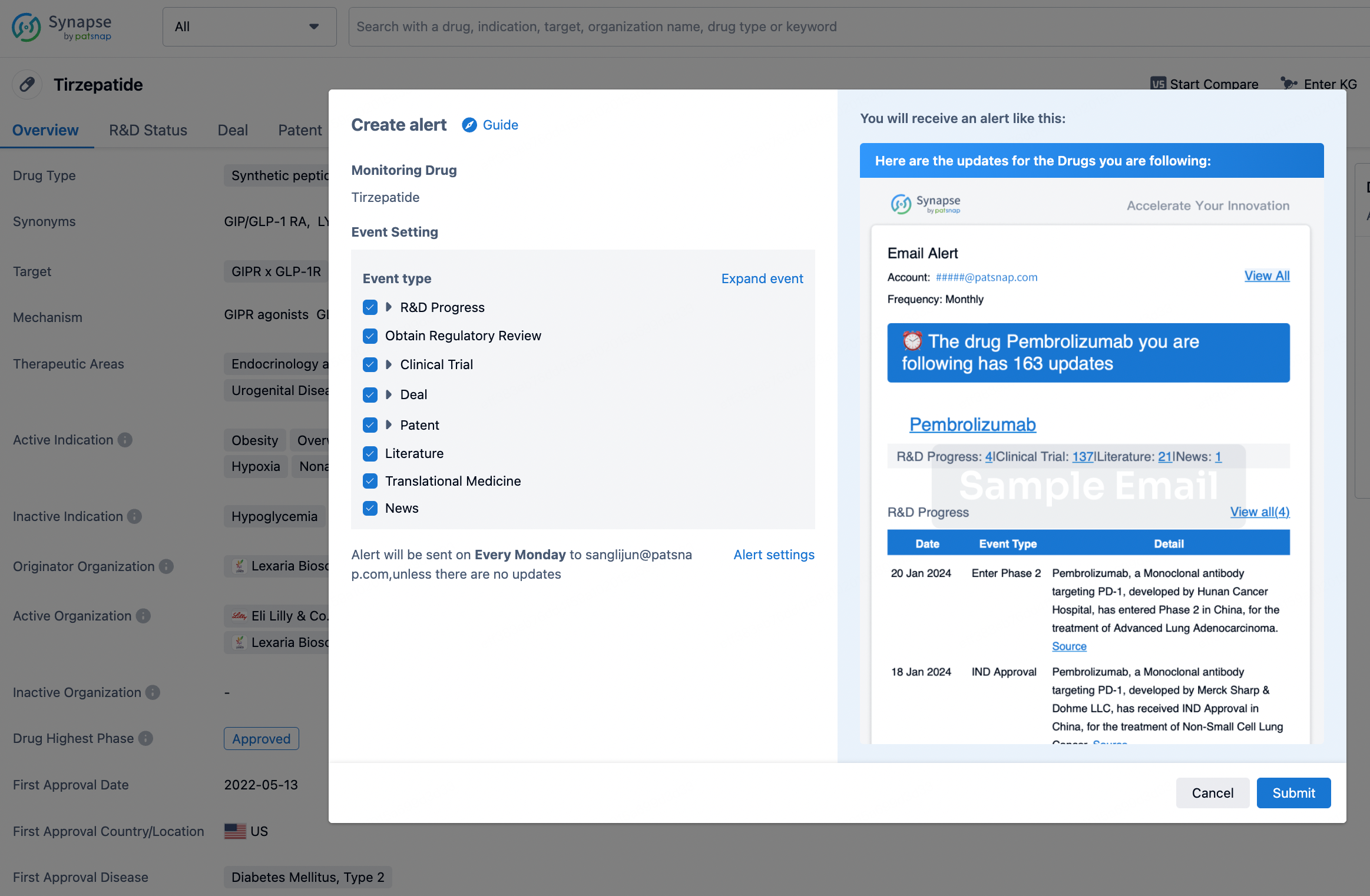Request Demo
What is the mechanism of Tegileridine Fumarate?
17 July 2024
Tegileridine fumarate is an intriguing compound that has been the subject of extensive pharmacological research due to its potential therapeutic applications. Understanding the mechanism of Tegileridine fumarate involves delving into its biochemical interactions, pharmacodynamics, and its effects on various physiological pathways. This article aims to elucidate these aspects in a comprehensive manner.
Tegileridine fumarate is primarily recognized for its role as a potent analgesic. It operates by interacting with the central nervous system (CNS), where it exerts its pain-relieving effects. The primary mechanism through which Tegileridine fumarate functions is by modulating the activity of specific neurotransmitters involved in pain perception.
One of the key neurotransmitters that Tegileridine fumarate influences is gamma-aminobutyric acid (GABA). GABA is an inhibitory neurotransmitter in the CNS and plays a crucial role in regulating neuronal excitability. Tegileridine fumarate enhances the effects of GABA by binding to GABA receptors, particularly the GABA-A subtype. This binding increases the influx of chloride ions into neurons, making the neurons less excitable and thereby reducing the sensation of pain.
Additionally, Tegileridine fumarate has been shown to inhibit the release of glutamate, another neurotransmitter that is typically associated with the excitation of neurons. By suppressing glutamate release, Tegileridine fumarate further contributes to the reduction of neuronal excitability and pain transmission.
Another significant aspect of Tegileridine fumarate's mechanism is its interaction with calcium channels. Voltage-gated calcium channels are essential for the release of neurotransmitters from presynaptic neurons. Tegileridine fumarate blocks these calcium channels, thereby preventing the release of pain-inducing neurotransmitters. This blockade contributes to its analgesic properties by reducing the communication between neurons in the pain pathways.
Moreover, Tegileridine fumarate exhibits some degree of affinity for opioid receptors, although this interaction is not as pronounced as its effects on GABA and glutamate systems. However, this minor activity on opioid receptors can still contribute to its overall analgesic profile, providing a multifaceted approach to pain management.
The pharmacokinetics of Tegileridine fumarate also play a critical role in its mechanism of action. Upon administration, the compound is rapidly absorbed and distributed throughout the body, reaching peak plasma concentrations within a short period. It undergoes hepatic metabolism, where it is converted into various metabolites, some of which may contribute to its therapeutic effects. The elimination of Tegileridine fumarate occurs primarily through renal excretion.
In conclusion, the mechanism of Tegileridine fumarate is multifaceted, involving the enhancement of GABAergic activity, inhibition of glutamate release, and blockade of voltage-gated calcium channels. These combined actions result in a significant reduction in neuronal excitability and pain transmission, making Tegileridine fumarate a potent analgesic. Understanding these mechanisms is crucial for the development of effective pain management strategies and for the potential therapeutic application of Tegileridine fumarate in clinical settings.
Tegileridine fumarate is primarily recognized for its role as a potent analgesic. It operates by interacting with the central nervous system (CNS), where it exerts its pain-relieving effects. The primary mechanism through which Tegileridine fumarate functions is by modulating the activity of specific neurotransmitters involved in pain perception.
One of the key neurotransmitters that Tegileridine fumarate influences is gamma-aminobutyric acid (GABA). GABA is an inhibitory neurotransmitter in the CNS and plays a crucial role in regulating neuronal excitability. Tegileridine fumarate enhances the effects of GABA by binding to GABA receptors, particularly the GABA-A subtype. This binding increases the influx of chloride ions into neurons, making the neurons less excitable and thereby reducing the sensation of pain.
Additionally, Tegileridine fumarate has been shown to inhibit the release of glutamate, another neurotransmitter that is typically associated with the excitation of neurons. By suppressing glutamate release, Tegileridine fumarate further contributes to the reduction of neuronal excitability and pain transmission.
Another significant aspect of Tegileridine fumarate's mechanism is its interaction with calcium channels. Voltage-gated calcium channels are essential for the release of neurotransmitters from presynaptic neurons. Tegileridine fumarate blocks these calcium channels, thereby preventing the release of pain-inducing neurotransmitters. This blockade contributes to its analgesic properties by reducing the communication between neurons in the pain pathways.
Moreover, Tegileridine fumarate exhibits some degree of affinity for opioid receptors, although this interaction is not as pronounced as its effects on GABA and glutamate systems. However, this minor activity on opioid receptors can still contribute to its overall analgesic profile, providing a multifaceted approach to pain management.
The pharmacokinetics of Tegileridine fumarate also play a critical role in its mechanism of action. Upon administration, the compound is rapidly absorbed and distributed throughout the body, reaching peak plasma concentrations within a short period. It undergoes hepatic metabolism, where it is converted into various metabolites, some of which may contribute to its therapeutic effects. The elimination of Tegileridine fumarate occurs primarily through renal excretion.
In conclusion, the mechanism of Tegileridine fumarate is multifaceted, involving the enhancement of GABAergic activity, inhibition of glutamate release, and blockade of voltage-gated calcium channels. These combined actions result in a significant reduction in neuronal excitability and pain transmission, making Tegileridine fumarate a potent analgesic. Understanding these mechanisms is crucial for the development of effective pain management strategies and for the potential therapeutic application of Tegileridine fumarate in clinical settings.
How to obtain the latest development progress of all drugs?
In the Synapse database, you can stay updated on the latest research and development advances of all drugs. This service is accessible anytime and anywhere, with updates available daily or weekly. Use the "Set Alert" function to stay informed. Click on the image below to embark on a brand new journey of drug discovery!
AI Agents Built for Biopharma Breakthroughs
Accelerate discovery. Empower decisions. Transform outcomes.
Get started for free today!
Accelerate Strategic R&D decision making with Synapse, PatSnap’s AI-powered Connected Innovation Intelligence Platform Built for Life Sciences Professionals.
Start your data trial now!
Synapse data is also accessible to external entities via APIs or data packages. Empower better decisions with the latest in pharmaceutical intelligence.


